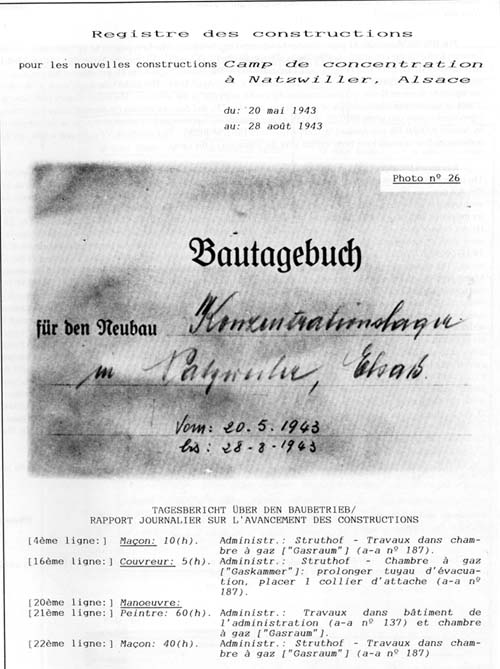| |
|
According to a photograph of Krematorium IV in the “Auschwitz Album” a gas-tight door was fitted in the corridor to give direct access front the outside, without having to pass through the vestibule. This additional door. visible on a photograph taken in May or June 1944 must be connected with the third design proposed for Krematorien IV and V. |
| |
· |
Third design: based on the testimony and drawing of S Dragan and the ruins of Krematorium V. This design was adopted for Krematorium V and perhaps also for Krematorium IV. It was imposed by the need to be able to gas small groups of victims and by inadequate Zyklon B supplies. A fourth gas chamber was created in the western unit by dividing the corridor in two in the proportion 1:2 [visible in the ruins of Krematorium V]. Four gas chambers, each of which had to be gas-tight, required six doors (or seven including the external door of the corridor) with seven openings for pouring Zyklon B. The ruins of Krematorium IV give no indication as to whether a fourth gas chamber was installed there. |
| |
My initial explanation was mistaken because I tried to explain the design of Krematorien IV and V on the basis of their final states and the modifications that had taken place in the basements of Krematorien II and III, modifications that were clearly apparent from a comparison of contemporary drawings and photographs and the existing ruins.
Other facts demonstrate the great variations in the internal arrangement of the Krematorien: |
| |
· |
the gas chamber [Leichenkeller I] of Krematorium II was divided in two in order to be able to “treat” small groups of people unfit for work (in 1944, according to Henryk Tauber). It is not known whether Krematorium III was also modified in this way: |
| |
· |
in the summer of 1944 [five] cremation ditches were dug in the precincts of Krematorium V because the furnaces were out of use. This resulted in the operating sequence being reversed with respect to the original design and running from east to west: vestibule, undressing room [central room], gas chambers, incineration ditches. In good weather, the victims undressed outside before entering the gas chambers, in line with the initial design (photographic evidence: the three “Polish resistance” photos). |
| |
|
| |
There remain a number of unclear points regarding the orders for gas-tight doors for Krematorien IV and V. While it would appear that the last “gas doors” were fitted in Krematorium V on 16th and 17th April 1943, i.e. twelve and thirteen days AFTER official acceptance of the building, the orders of l6th June 1943 for iron for fittings for Krematorien IV and V and for fittings for 4 gas-tight doors for Krematorium IV, then on 17th April the order front the Krematorium maintenance service for 4 new doors, again for Krematorium IV cannot he explained in the light of present knowledge. It could be that the first type of door proved unsatisfactory and the SS wanted to make them easier to handle, or stronger, or make other modifications, as had already been done with the gas-tight windows, where two different models were produced. |
| 23. |
Gastüren verankerungen 210 Stk / 210 anchors for gas-tight doors
[File BW 30/26, page 68. line 8] |
[Photo 31] |
| |
|
| |
Order for Krematorium IV, issued during the interior fitting out by Riedel & Son, dated 15th February 1943 [and not 1942 as seems to he written] requesting among other things 210 anchors for fixing the gas-tight doors. Issued one month after the order for four gas-tight doors, two days after that for “12 gasdichten Türen ca 30/40 cm” and thirteen days before these “doors” [windows] were fitted, this note is directly connected with those orders and is good additional evidence in “Gas-” for Krematorium IV. |
|
 |
Photo 26 |
|
| Translation of part of Photo 26 |
|
| Construction diary |
|
For the new construction: Concentration camp at Natziwiller, Alsace
From: 20th May 1943
To: 28th August 1943 |
|
|

